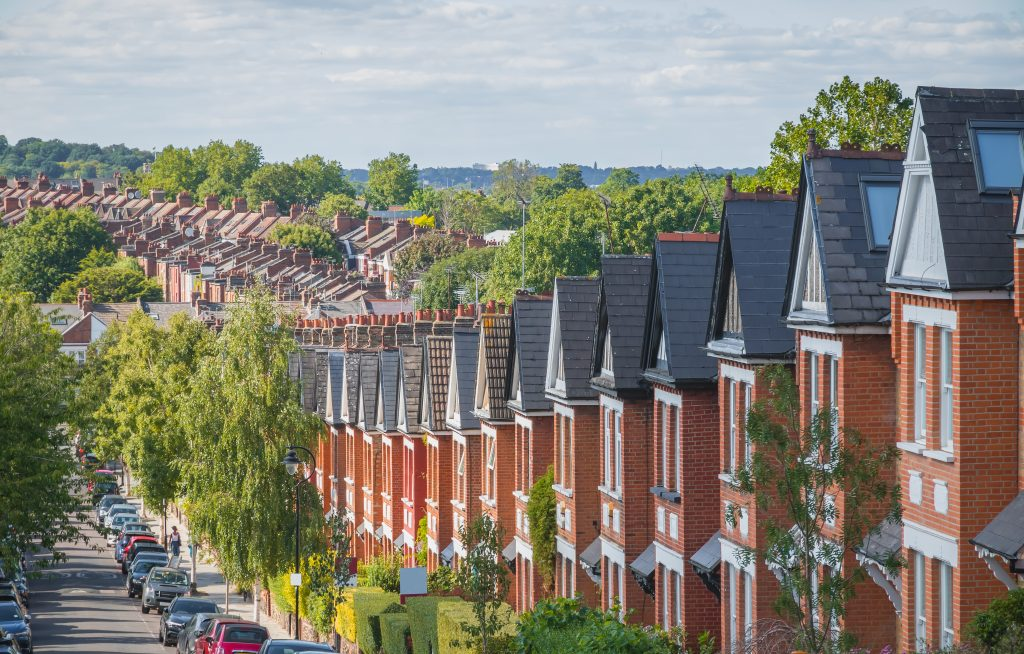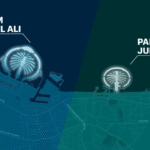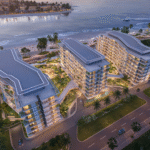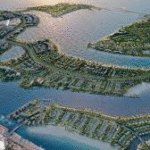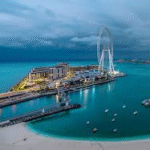Now Reading: Dubai Design District: 5 Real Estate Investments With VAT Exemptions in 2025
-
01
Dubai Design District: 5 Real Estate Investments With VAT Exemptions in 2025
Dubai Design District: 5 Real Estate Investments With VAT Exemptions in 2025
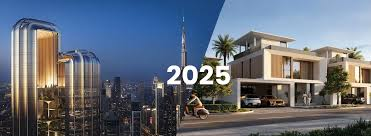
Table of Contents
Dubai Design District (D3), a creative hub launched in 2013 by TECOM Group, fosters design, fashion, and art industries across 11 million square feet near Business Bay. Offering commercial and residential properties, D3 is a free zone with tax incentives, making it attractive for U.S. investors.
Dubai’s tax-free environment no personal income tax, capital gains tax, or annual property taxes ensures investors retain 100% of rental income and resale profits, unlike U.S. markets where taxes reduce returns by 15-30%. The UAE dirham’s peg to the U.S. dollar eliminates currency risk, and the Golden Visa, offering 10-year residency for investments of AED 2 million ($545,000) or AED 1.5 million ($408,000) for green projects, adds appeal.
In 2025, Dubai’s real estate market thrives, with H1 transactions reaching AED 326.7 billion ($89 billion) across 91,897 sales, up 23% year-on-year, per Espace Real Estate. D3 properties yield 7-10%, per bayut.com, driven by proximity to Downtown Dubai and the Design Quarter. This article highlights five real estate investment opportunities in D3 with VAT exemptions for U.S. investors in 2025, leveraging Federal Decree-Law No. 8 of 2017.
1. Design Quarter Residences
Design Quarter Residences, developed by Meraas, offers 1-3 bedroom apartments (AED 1.8 million-$3.5 million, $490,000-$952,900, 7-9% yields), with handover in Q3 2025. Initial costs include a 4% DLD fee ($19,600-$38,116) and 2% broker fee ($9,800-$19,058), totaling $29,400-$57,174.
VAT Exemption: The first sale of residential properties within three years of completion is zero-rated, saving $24,500-$47,645 on VAT. U.S. investors deduct depreciation ($17,818-$34,651) and management fees ($3,920-$7,623) on IRS Schedule E, saving $4,348-$15,849 at 20-37% tax rates, per IRS Publication 527. Annual tax savings ($28,848-$63,494) often exceed initial costs, supporting tax-free returns of $34,300-$85,760.
Investment Strategy: Target off-plan apartments for VAT zero-rating, verifying Meraas’s Oqood system compliance to secure exemptions.
2. D3 Waterfront Apartments
D3 Waterfront Apartments, by Nakheel, features 1-2 bedroom units (AED 1.5 million-$2.8 million, $408,000-$762,000, 7-10% yields), with handover in Q4 2025. Initial costs include a 4% DLD fee ($16,320-$30,480) and 2% broker fee ($8,160-$15,240), totaling $24,480-$45,720.
VAT Exemption: Zero-rated VAT on first residential sales saves $20,400-$38,100. Short-term rentals (e.g., Airbnb) registered as residential are VAT-exempt, saving $2,856-$4,572 on $57,120-$91,440 rental income. U.S. investors deduct depreciation ($14,836-$27,709) and management fees ($4,570-$7,315), saving $3,881-$13,132 at 20-37% tax rates. Annual tax savings ($27,137-$58,804) exceed initial costs.
Investment Strategy: Focus on short-term rental units near the D3 Design Hub, partnering with platforms like Smarthost to maximize occupancy and VAT exemptions.
3. Creative Community Residences
Creative Community Residences, by Emaar, offers studio to 2-bedroom apartments (AED 1.4 million-$2.5 million, $381,000-$680,000, 7-9% yields), with handover in Q2 2026. Initial costs include a 4% DLD fee ($15,240-$27,200) and 2% broker fee ($7,620-$13,600), totaling $22,860-$40,800.
VAT Exemption: Zero-rated VAT on first sales saves $19,050-$34,000. The 2025 gift transfer fee reduction to 0.125% saves $77,250 on a $2 million transfer (from $80,000), per Taylor Wessing, avoiding 9% UAE corporate tax ($2,401-$4,896 on $26,670-$54,400 rental income). U.S. investors deduct depreciation ($13,855-$24,727), saving $2,771-$9,149 at 20-37% tax rates. Annual tax savings ($99,071-$120,399) exceed initial costs.
Investment Strategy: Restructure to individual ownership via gift transfers, ensuring DLD compliance to avoid corporate tax and secure VAT exemptions.
4. Green Design Lofts
Green Design Lofts, a sustainable project by Omniyat, offers 1-3 bedroom lofts (AED 2 million-$4 million, $545,000-$1.09 million, 7-8% yields), with handover in Q1 2026. Initial costs include a 4% DLD fee ($21,800-$43,600) and 2% broker fee ($10,900-$21,800), totaling $32,700-$65,400.
VAT Exemption: Zero-rated VAT on first sales of green-certified properties saves $27,250-$54,400. The 2025 Golden Visa threshold for green projects (AED 1.5 million) saves $3,000-$5,000 in residency costs. U.S. investors deduct depreciation ($19,818-$39,636) and maintenance ($3,000-$6,000), saving $4,563-$16,665 at 20-37% tax rates. Annual tax savings ($34,813-$76,065) exceed initial costs, supporting tax-free returns of $38,150-$87,200.
Investment Strategy: Invest in green-certified lofts for VAT and residency benefits, ensuring compliance with Dubai’s sustainability standards.
5. Mixed-Use Creative Towers
Mixed-Use Creative Towers, by Dubai Properties, offers commercial offices and residential units (AED 2.2 million-$4.5 million, $599,000-$1.23 million, 8-10% yields), with handover in Q3 2026. Initial costs include a 4% DLD fee ($23,960-$49,050) and 2% broker fee ($11,980-$24,525), totaling $35,940-$73,575.
VAT Exemption: The residential portion’s first sale is zero-rated, saving $29,950-$61,500, while commercial leases incur 5% VAT ($3,596-$6,150 on $71,880-$123,000 rental income), recoverable if registered with a TRN, per dubailand.gov.ae. U.S. investors deduct depreciation ($21,782-$44,727) and management fees ($5,750-$9,840), saving $5,506-$19,938 at 20-37% tax rates. Annual tax savings ($35,456-$85,938) offset initial costs.
Investment Strategy: Use a D3 free zone company for residential units to secure VAT zero-rating and recover VAT on commercial leases, targeting creative businesses for high demand.
U.S. Tax Compliance Considerations
D3’s tax-free market outperforms U.S. cities like San Francisco (3-5% yields). A $680,000 property yielding 8% generates $54,400 tax-free annually, versus $38,080-$45,392 after U.S. taxes. Report rental income on Schedule E, deducting depreciation ($24,727), maintenance ($3,000-$5,000), management fees ($4,352-$6,528), and mortgage interest ($27,200 for a $680,000 loan at 4%).
Foreign assets over $50,000 (single filers) or $100,000 (joint filers) require Form 8938, and accounts over $10,000 need an FBAR, with non-compliance risking penalties up to $100,000. The 4% DLD fee ($27,200) isn’t deductible. Consult a tax professional to optimize deductions.
Risks and Mitigation Strategies
Dubai’s market is robust, with AED 761 billion in 2024 transactions and a projected 5-8% price increase in 2025, per fäm Properties. D3 risks include oversupply (182,000 units by 2026), off-plan delays, and global economic volatility, per gulfnews.com.
Mitigate by selecting developers like Meraas, Nakheel, Emaar, Omniyat, or Dubai Properties, verifying escrow compliance under the 2025 Oqood system, and targeting properties near the Design Hub or Burj Al Arab for high demand. Confirm VAT exemptions and proof of funds compliance to avoid fines up to AED 500,000.
Why Dubai Design District in 2025?
Dubai’s Economic Agenda D33 and 25 million projected tourists in 2025 drive demand in D3, with off-plan sales up 30% in 2024 to AED 334.1 billion, per fäm Properties. Yields of 7-10% and zero personal taxes outpace global hubs like London (3-5%) or New York (2-4%), per CBRE’s 2024 Middle East Real Estate Market Outlook.
These five investments Design Quarter Residences, D3 Waterfront Apartments, Creative Community Residences, Green Design Lofts, and Mixed-Use Creative Towers leverage VAT exemptions through zero-rated first sales, VAT-exempt rentals, gift transfer reductions, Golden Visa savings, and recoverable commercial VAT, per dubailand.gov.ae and bayut.com.
In conclusion, D3’s 2025 real estate market offers U.S. investors tax-efficient opportunities through UAE and IRS strategies. By leveraging VAT exemptions, partnering with reputable developers, and ensuring compliance, investors can maximize returns in this vibrant creative hub. Dubai Design District
read more: Dubai Production City: 7 Tax Opportunities for Commercial Property Buyers in 2025




